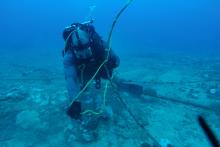Some units did not fare as well. Stuart Cohen, an ISD project manager who got involved with the ERP initiative in May 2001, says the core Sun E450 servers were undersized, as was the storage environment.
Data and user volumes were miscalculated and the hardware was undersized, but tuning the software and database have kept the ERP system running smoothly, Cohen says. Despite the problems surrounding the hardware configuration, he says he was confident that IT would deliver a production-quality environment. "The concern was never ISD not delivering," he says. "It was the Andersen reliance on business flow."
Concerns about Andersen and PeopleSoft notwithstanding, IT was tasked with making the April 2002 go-live date a reality for the entire institution.
One of the biggest hurdles Murray and his team faced was that, even though PeopleSoft 8 is a Web-based client architecture, there were still desktop considerations (aren't there always!). In this case, it was a rollout of Microsoft's Internet Explorer 5.5--which PeopleSoft 8 requires--to 3,000 desktops in three months, replacing Netscape Communicator.
The hospital's standard desktop platform was more than adequate to support the additional browser, but memory and rogue DLL conflicts were a concern. Murray's group performed extensive compatibility testing between core hospital applications and new software and started deploying IE to the desktops using Microsoft's Systems Management Server. The installation went very well but, no surprise, the helpdesk started receiving calls immediately.









